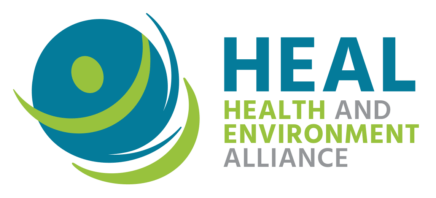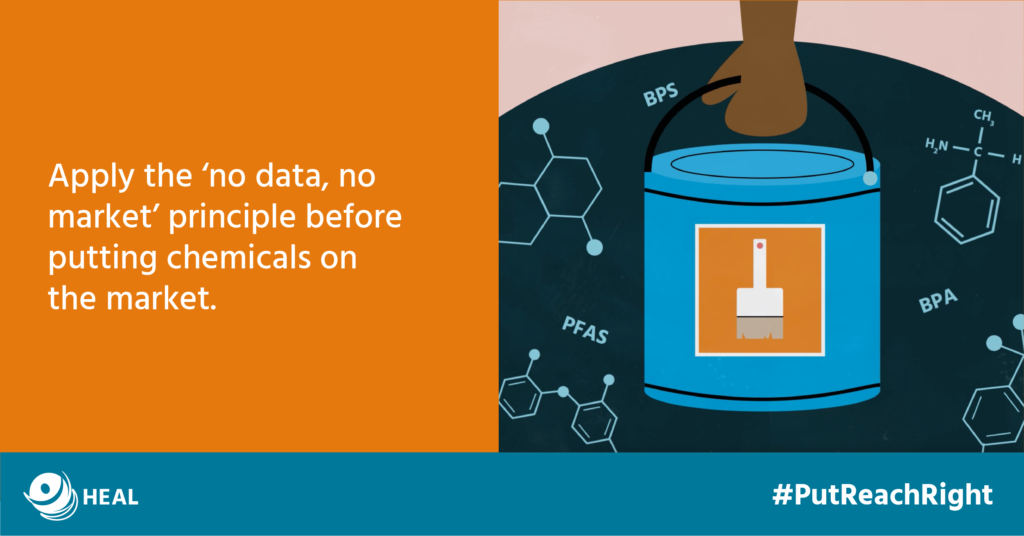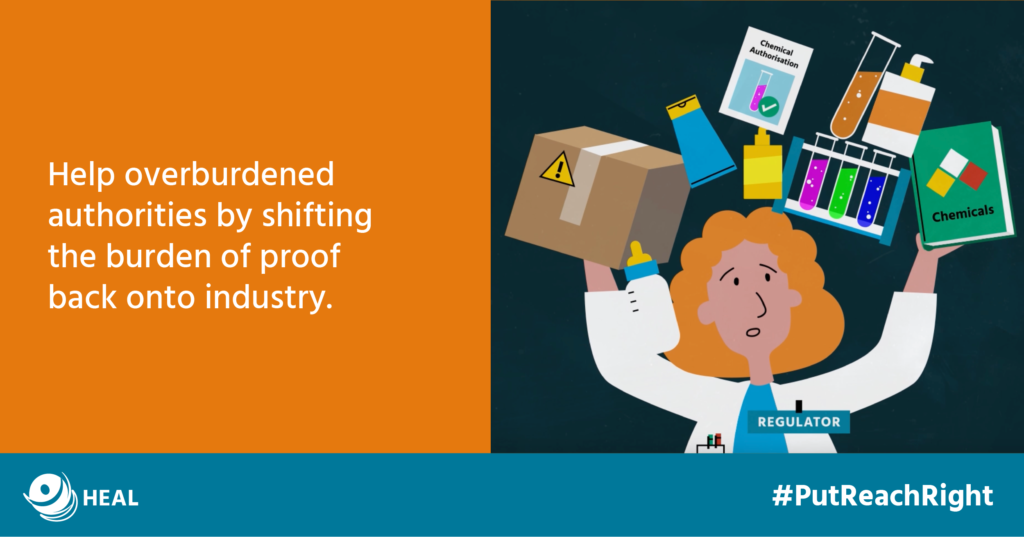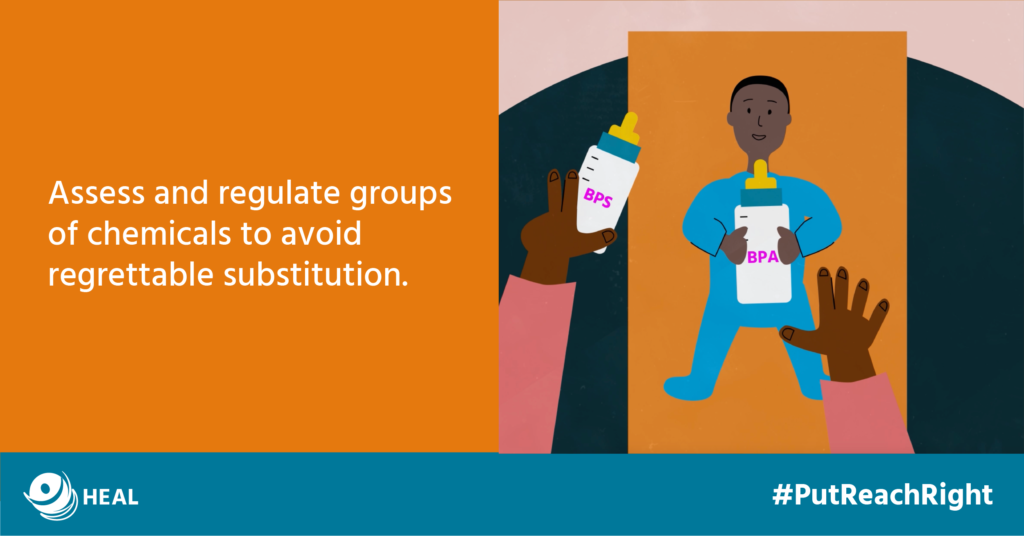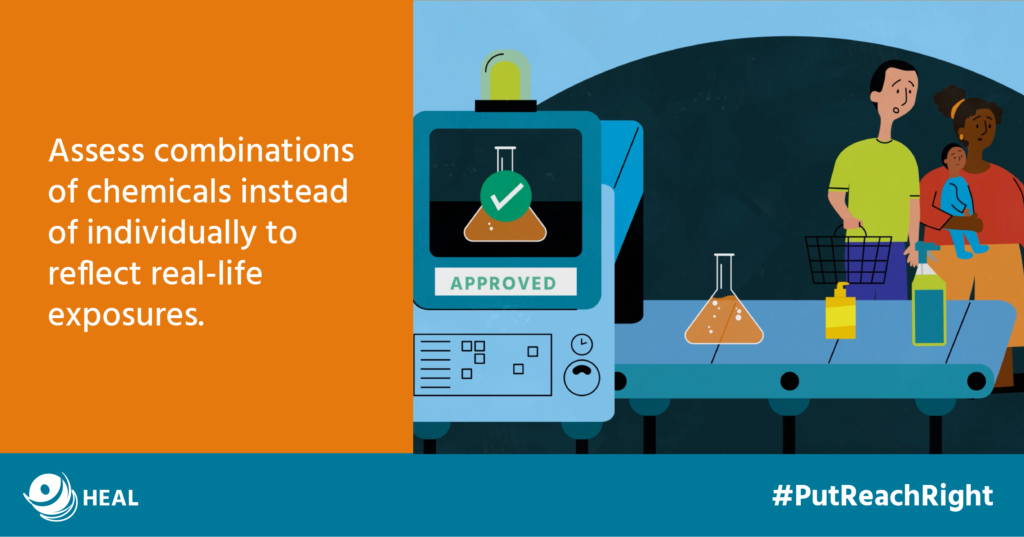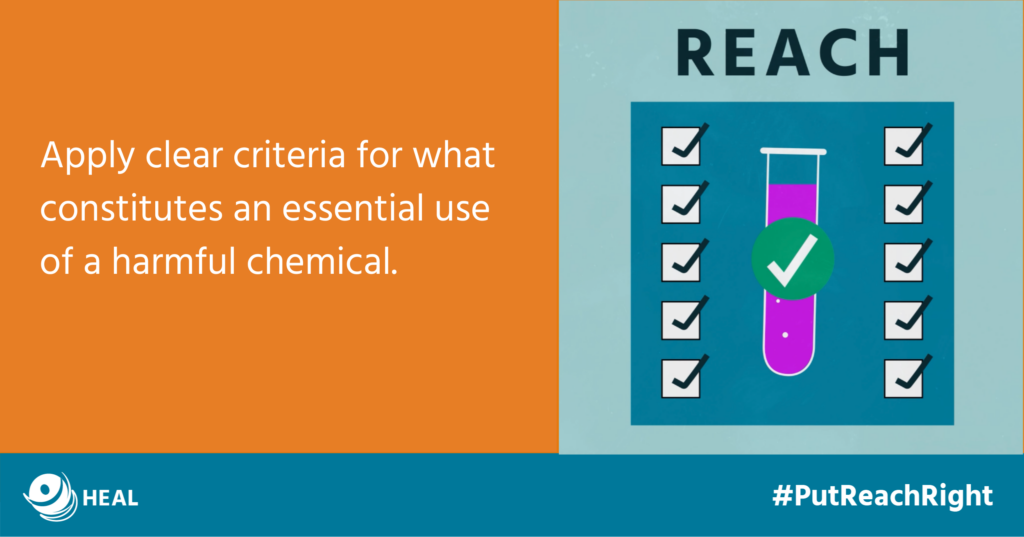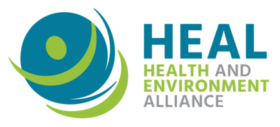Are you our new Communications Officer?
The REACH legislation sets out how chemicals entering and in use on the EU market are registered, evaluated, authorised and restricted.
The long-awaited revision of REACH is announced for 2025 – a key opportunity to strengthen its effectiveness for protecting people’s health and the environment through better and earlier identification of hazardous chemicals and the implementation of risk management measures.
First introduced in 2007, REACH applies to all chemical substances produced and imported into the EU, from those used in industrial processes to the chemicals used in our clothes, furniture, electrical appliances, and more.
This video is also available with French or Spanish subtitles.
While REACH has in theory many of the right tools to protect health and the environment against hazardous chemicals, in practice its implementation suffers from many deficiencies and a lack of industry accountability. In 2020, as part of the European Union’s Chemicals Strategy for Sustainability (CSS), a long-term vision for EU chemicals policy and work ambition for a toxic-free environment, the European Commission committed to publish a proposal to reform REACH by the end of 2022. The June 2024 Environment Council conclusions urge “the Commission to keep a high level of ambition in the implementation of the strategy” and reiterates the commitment towards a toxic-free environment as the basis for the promotion of a sustainable, competitive and resilient EU industry.
At the end of the 2019-2024 EU Commission’s mandate, the legislative proposals were still not made public and HEAL continued to insist on the urgency to fix the REACH legislation to effectively protect people’s health against harmful chemicals.
As announced in the EU Commission Clean Industrial Deal, the Commission’s proposal for a revision of REACH is now expected for later in 2025 as part of the Chemical Industry Package. This remains urgent and important as ever: a recent report found that it takes officials up to 13 years and 8 months to assess the hazards of a single chemical substance. Well-known and -studied harmful substances such as bisphenols, lead and PVC are still widely present on the market today.
Current REACH’s limitations
Important shortcomings within the legislation implementation and enforcement include:
- Industry non-compliance by providing insufficient data when registering chemicals. This is contributing to data gaps, bottlenecks, and delays in the evaluation process.
- Unacceptably high burdens placed on authorities across the different steps of hazard identification and risk management. This is significantly slowing or blocking implementation of protective measures, leaving people exposed to harmful chemicals on the market for years.
- Regrettable substitution has become common practice as industry continually replaces harmful chemicals already restricted or banned with new, less well studied chemicals possessing similar intrinsic properties and likely similar (or even more harmful) effects.
- Unjustified derogations are granted by authorities during REACH’s authorisation and restriction processes as a result of a lack of transparency and prioritisation of industry interests over human health and the environment in risk management decisions.
It is crucial to ensure that the revision of REACH addresses these regulatory failures. This will stop harmful chemicals continuously being allowed into the EU market, polluting the environment and putting people’s health at risk.
HEAL’s key demands for the REACH reform
Demand 1: No data, no market
At the moment, chemicals are often put on the market without sufficient and adequate data to prove they are safe. The registration process needs to be upgraded, including through the strengthening of data requirement provisions for companies before they can put their chemicals on the market. Strengthening the registration requirements is fundamental to ensure that the rest of the REACH processes are made easier and can move more quickly. Ultimately, the information provided by registrants needs to be sufficient to allow for the identification and characterisation of chemical hazards, including the new hazard classes of the CLP Regulation e.g. endocrine disrupting properties.
Demand 2: Shift the burden of proof back onto industry
Reduce the burden of proof on authorities to regulate a chemical of concern and provide a simpler mechanism for member states to take action based on concerns for harm. Due to non-compliance with the existing obligations, the current evaluation processes for dossiers and substances are slow and arduous for authorities. The ECHA mandate for initial completeness checks of dossiers should be strengthened and adequate time allowed to conduct the assessments, to incentivise compliance and sufficient data generation by registrants. Furthermore, the authorities’ burden when preparing restriction proposals should be reduced, for example by providing clear guidance on grouping approaches.
Demand 3: Assess and regulate entire groups of chemicals (instead of one at the time)
REACH promotes the substitution of harmful chemicals by safer alternatives, but industry often swaps harmful chemicals already restricted or banned with less well studied chemicals possessing similar (or even more) harmful effects on health. This practice is known as regrettable substitution. To prevent this from happening, REACH must allow the assessment and regulation of entire groups of chemicals, instead of just one chemical at a time.
Furthermore, grouping chemicals could further simplify REACH assessment processes, while encouraging companies to invest into safer alternatives.
Likewise, the generic risk assessment (GRA) approach currently applied to chemicals that are carcinogenic, mutagenic and toxic to reproduction and consumer uses, should be extended to the most hazardous chemicals, including persistent, bioaccumulative or mobile substances and endocrine disruptors, and professional uses. This would allow to trigger an automatic/direct protection against the use of the most hazardous substances in consumer and professionally used products.
Demand 4: Assess combinations of chemicals representing real-life exposures
The EU Chemicals Strategy promises to act to “account for the cocktail effect of chemicals when assessing risks from chemicals.” Science has clearly demonstrated the ability to account for differing effects due to real-life exposures to many chemicals at once. It’s time for policy to catch up with science and account for this by applying a mixture assessment factor (MAF).
Demand 5: Apply clear criteria for what constitutes an essential use of a harmful chemical
Some hazardous chemicals are not easy to replace on short notice , because their uses might currently be critical to ensure health and safety, or the functioning of society. However, too many exemptions currently allow continuing the use of known harmful chemicals without proper justifications and while safer alternatives exist. To establish clear and transparent criteria for when the continued use of those substances can be justified, in 2024 the EU Commission has developed guiding criteria and principles for what would constitute ‘essential uses‘ of the most harmful chemicals. These criteria should be integrated into REACH to promote the aim of safe substitution by preventing unjustified applications for authorisation to keep using this harmful chemicals. Adhering to the essential use criteria that were recently developed and communicated by the Commission will give companies security in their planning and investment decisions as well as streamline and shorten the decision-making processes for the most hazardous chemicals.
Demand 6: Legal provisions to allow sanctions for non-compliance
The EU Chemicals Strategy promised a zero-tolerance approach for non-compliance. Disincentivising non-compliance by applying a fine to chemical companies which don’t meet their obligations under REACH and break the law would provide a straightforward mechanism for enforcement.
Find out more about HEAL’s previous work on REACH here
